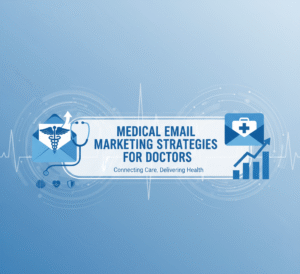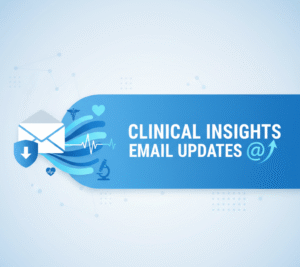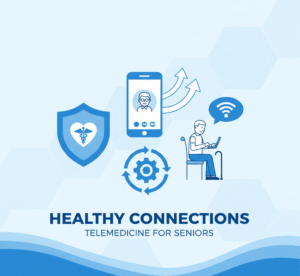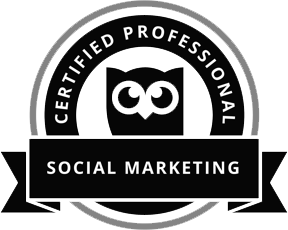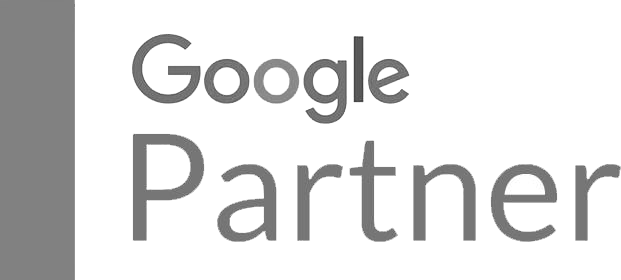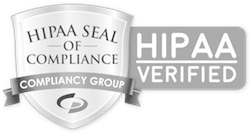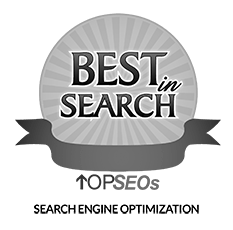“Learn how educational content builds patient trust and boosts engagement for medical practices. Discover practical examples and Google E-E-A-T principles for effective healthcare marketing.”
In the evolving healthcare landscape, patient trust and active engagement are more crucial than ever. Providing excellent clinical care is no longer enough for medical practices aiming to grow and thrive. You must also cultivate a strong, transparent relationship with your patients. This is where high-quality educational content becomes an indispensable asset. It informs, empowers, and builds deep-seated loyalty.
This article explores how impactful educational content helps medical practices forge strong bonds of trust and significantly boost patient engagement. We will delve into real, practical examples demonstrating how clear, informative content creates transparency and fosters lasting loyalty. Furthermore, we will underscore the importance of aligning your medical content with Google’s E-E-A-T (Experience, Expertise, Authoritativeness, and Trustworthiness) principles.
The Foundation of Trust: Informing and Empowering Patients
Trust is the bedrock of any successful patient-provider relationship. Patients often face complex medical information, anxiety about their health, and a desire for clarity. When medical practices provide accessible, accurate, and easy-to-understand educational content, they address these fundamental needs head-on.
Consider this: an informed patient is an empowered patient. When individuals understand their conditions, treatment options, and preventative measures, they can actively participate in their healthcare decisions. This participation naturally leads to more substantial ownership over their health journey. Furthermore, it builds immense confidence in their healthcare provider.
For example, imagine a patient diagnosed with a new, chronic condition. They likely feel overwhelmed. A medical practice offering a series of clear, concise articles, short videos, or interactive modules explaining the condition, its management, and lifestyle adjustments provides an invaluable service. This proactive approach shows genuine care, moving beyond just clinical appointments to become a consistent source of reliable information. As a result, patients see their provider not just as a clinician, but as a trusted guide.
The Role of Health Literacy
Patient education directly enhances health literacy. Health literacy refers to an individual’s capacity to obtain, process, and understand basic health information and services needed to make appropriate health decisions. When medical practices simplify complex medical jargon, use visual aids, and offer multilingual resources, they make health information accessible to a broader audience.
This accessibility is not merely a convenience; it is a necessity. A patient who comprehends their treatment plan is far more likely to adhere to it. This leads to better health outcomes and a more collaborative relationship with their healthcare team. Educational content effectively bridges communication gaps, reducing patient anxiety and fostering a sense of partnership.
Practical Examples: Content in Action
Let’s look at specific, actionable examples of how informative content can create transparency and loyalty within a medical practice:
1. Engaging Blog Posts and Articles
Blog posts are versatile tools for patient education. They allow a practice to explore common health concerns, explain procedures, or discuss preventative care.
- Example: A cardiology clinic could publish an article titled “Understanding Your Cholesterol Levels: A Patient’s Guide.” This article might break down different types of cholesterol, explain their impact on heart health, and offer practical tips for diet and exercise. It could also include an FAQ section addressing common patient questions about medication or lifestyle changes. This type of content directly answers patient queries and provides actionable advice.
- Trust Factor: The clinic establishes itself as an authoritative and caring resource by offering clear, digestible information on a prevalent health issue. Patients appreciate the transparency and the effort to simplify complex topics.
2. Informative Video Series
Video content is highly engaging and can simplify complex medical concepts visually.
- Example: A physical therapy practice might create videos demonstrating proper form for common exercises to alleviate back pain. Each video could explain the exercise’s benefits, common mistakes to avoid, and when to seek professional help.
- Trust Factor: Videos add a human touch. Patients can see and hear their providers, which helps build a connection before an in-person visit. Demonstrations clarify instructions, reducing confusion and potential injury, thus reinforcing expertise and trustworthiness.
3. Patient Portals with Comprehensive Resources
Modern patient portals can be more than just appointment schedulers or billing platforms. They can serve as robust educational hubs.
- Example: A multi-specialty clinic could integrate an extensive library of articles, videos, and downloadable guides into its patient portal. After a diagnosis, the system could automatically recommend relevant educational materials to the patient. For instance, a patient newly diagnosed with diabetes could receive links to information on diet, glucose monitoring, and medication adherence.
- Trust Factor: Providing centralized, personalized access to health information demonstrates a commitment to ongoing patient support. It offers transparency by allowing patients to review their care plans and test results, fostering a sense of control and collaboration.
4. Interactive Tools and Quizzes
Interactive content boosts engagement and helps patients assess their understanding.
- Example: An obstetrics and gynecology practice might offer an interactive quiz about prenatal nutrition. The quiz could provide immediate feedback and link to articles or resources based on the patient’s answers.
- Trust Factor: Such tools make learning enjoyable and effective. They show that the practice is innovative and genuinely wants patients to grasp important health information, thus building credibility.
5. Patient Testimonials and Case Stories
Real-life experiences resonate deeply with potential patients.
- Example: A fertility clinic could share anonymized patient success stories detailing the challenges and positive outcomes. These stories highlight the compassionate care provided and the medical team’s expertise.
- Trust Factor: These narratives offer social proof and humanize the practice. When prospective patients see how others have benefited, it instills confidence and creates a powerful emotional connection. Ensure you always obtain explicit consent when sharing patient stories.
6. Clear FAQs Sections
A well-structured FAQ section addresses common patient concerns, reducing anxiety and streamlining communication.
- Example: An urgent care clinic might have an FAQ addressing typical conditions treated, insurance questions, and what to expect during a visit.
- Trust Factor: Proactive answers demonstrate attentiveness to patient needs. They save patients time and effort and show that the practice anticipates their questions and provides clear information.
7. Social Media Educational Campaigns
Social media platforms are excellent for disseminating bite-sized, engaging educational content.
- Example: A dermatology practice could run a “Sun Safety Week” campaign on Instagram, sharing infographics about SPF, common skin cancers, and tips for protecting skin, perhaps with short video Q&A sessions featuring their dermatologists.
- Trust Factor: Consistent, valuable content on social media positions the practice as an approachable and knowledgeable resource. It helps build a community around health topics, fostering engagement and a sense of connection.
The Google E-E-A-T Imperative in Healthcare Content
In the digital realm, visibility often equates to credibility. Google’s E-E-A-T principles—Experience, Expertise, Authoritativeness, and Trustworthiness—are paramount for any website, especially those in the “Your Money or Your Life” (YMYL) category, which includes healthcare. Google holds YMYL content to the highest standards because inaccurate information in these areas can significantly impact a person’s well-being.
Aligning with E-E-A-T is not just about pleasing an algorithm; it is about genuinely demonstrating your practice’s value and reliability to search engines and patients.
E: Experience
This refers to the creator’s first-hand experience with the topic. For healthcare, it means showing that the content creator, or the source of information, has practical, real-world knowledge.
- How to demonstrate: Feature content written or reviewed by practicing physicians, nurses, or specialists with direct patient care experience. Include their bios, years of practice, and areas of specialization. For instance, a blog post about a specific surgical procedure should ideally be authored by a surgeon who performs that procedure regularly.
E: Expertise
Expertise relates to the knowledge and skills of the content creator in a particular field.
- How to demonstrate: Ensure content is factually accurate and medically sound. Cite reputable sources such as peer-reviewed journals, national health organizations (e.g., CDC, WHO, NIH), and established medical associations. Use clear, accessible language while maintaining clinical accuracy. Detailed articles on medical conditions, treatment protocols, and preventative care written or reviewed by licensed professionals showcase this.
A: Authoritativeness
Authoritativeness signifies that the content creator or website is a recognized and respected source for the topic.
- How to demonstrate:
- Professional Credentials: Display your medical staff’s credentials, certifications, and affiliations.
- Backlinks: Secure backlinks from other reputable healthcare organizations, academic institutions, or news outlets. These links act as “votes of confidence” from authoritative sources.
- Awards and Recognition: Showcase any awards, certifications, or partnerships your practice has achieved.
- Media Mentions: Highlight instances where your practice or its experts have been featured in reputable media.
T: Trustworthiness
Trustworthiness is the most critical component, especially in healthcare. It means the content and the website are accurate, transparent, and reliable. Patients must feel safe and confident relying on the information provided.
- How to demonstrate:
- Transparency: Have easily accessible “About Us” and “Contact” pages with clear information about your practice, its mission, and its team.
- Privacy and Security: Ensure your website uses secure protocols (HTTPS) and has clear privacy policies (e.g., HIPAA compliance statements).
- Patient Reviews: Encourage satisfied patients to leave reviews on platforms like Google My Business. Respond professionally to all reviews, positive and negative. Online reviews are powerful trust signals.
- Accuracy and Updates: Regularly audit and update your content to reflect the latest medical advancements and guidelines. Outdated information erodes trust.
- Clear Disclaimers: Include disclaimers on educational content, advising readers to consult with a healthcare professional for personalized medical advice.
By meticulously integrating E-E-A-T principles into your content strategy, you improve your search engine rankings and, more importantly, build a powerful bond of trust with your current and prospective patients. This trust translates into greater patient loyalty, better health outcomes, and a more robust practice.
Digital Marketing for Medical Practices: The Content Advantage
Digital marketing in healthcare is no longer an option; it is a necessity. Patients today begin their healthcare journey online, researching symptoms, conditions, and potential providers. A strong digital presence, fueled by educational content, allows medical practices to meet patients where they are.
Content marketing is the cornerstone of effective digital outreach for clinics and hospitals. It’s about providing value upfront, demonstrating your expertise, and establishing a relationship before a patient enters your office.
Consider these advantages:
- Increased Visibility: High-quality, E-E-A-T-optimized content improves your search engine rankings. When patients search for health information, your practice appears as a reliable source, and this organic visibility is invaluable.
- Lead Generation: Informative content attracts potential patients searching for solutions to their health concerns. They discover your practice through your helpful articles, videos, or guides.
- Patient Nurturing: Content marketing lets you stay connected with existing patients, providing ongoing education, reminders, and updates. This consistent interaction reinforces trust and encourages repeat visits or referrals.
- Authority Building: Regularly publishing well-researched, expert content positions your practice as a thought leader in its specialty. This authority attracts new patients and strengthens relationships with existing ones.
- Competitive Edge: In a crowded healthcare market, practices consistently offering valuable educational content stand out. They become the go-to resource for health information, setting them apart from competitors.
For example, a dermatology clinic that regularly publishes articles on skin cancer prevention, acne treatments, or the latest cosmetic procedures will attract individuals searching for these topics. The clinic builds trust by providing comprehensive answers and clear guidance, and positions itself as the expert. When those individuals are ready to schedule an appointment, they are far more likely to choose the practice that has already provided them with so much value.
Conclusion: Building a Healthier Future Through Content
In sum, high-quality educational content is a marketing tactic for medical practice and a fundamental strategy for fostering trust and engagement. By informing and empowering patients, practices build stronger relationships, improve health literacy, and ultimately contribute to better health outcomes. Prioritizing clear, accurate, and accessible information and adherence to Google’s stringent E-E-A-T principles ensures your content reaches and resonates with your target audience.
The journey to building patient trust and engagement through content is continuous. It requires commitment, consistent effort, and a deep understanding of patient needs. However, the rewards are substantial: a loyal patient base, enhanced reputation, and sustainable practice growth.
Frequently Asked Questions (FAQs)
Q1: What exactly is “educational content” in healthcare marketing?
A1: Educational content in healthcare refers to any material that informs and teaches patients about health conditions, treatment options, preventative care, wellness tips, or how to navigate the healthcare system. This can include blog posts, articles, videos, infographics, patient guides, webinars, and FAQs. The goal is to empower patients with knowledge.
Q2: How does educational content specifically build patient trust?
A2: Educational content builds trust by demonstrating a medical practice’s expertise, transparency, and genuine care for patient well-being. When you provide precise, accurate, and accessible information, patients feel informed and respected. This proactive approach shows you are a reliable source of knowledge, fostering confidence and loyalty.
Q3: What are Google’s E-E-A-T principles, and why are they essential for medical content?
A3: E-E-A-T stands for Experience, Expertise, Authoritativeness, and Trustworthiness. Google uses these principles to evaluate the quality and credibility of web content, especially for “Your Money or Your Life” (YMYL) topics like health. For medical content, adhering to E-E-A-T ensures your information is seen as reliable and accurate by both search engines and patients, which helps with search rankings and builds patient confidence.
Q4: Can educational content help patient engagement beyond just providing information?
A4: Absolutely. Educational content fosters engagement by making patients active participants in their health journey. Engaging content (e.g., interactive quizzes, relatable patient stories, clear videos) encourages patients to learn more, ask questions, and follow recommendations. This leads to better adherence to treatment plans and a stronger, more collaborative patient-provider relationship. Consistent, valuable content keeps patients connected to your practice.
Q5: What simple examples of educational content can a small medical practice create?
A5: Even a small practice can create impactful content. Simple examples include:
- Short blog posts: “5 Ways to Boost Your Immune System This Winter.”
- Quick video tips: A 60-second video demonstrating a stretching exercise for neck pain.
- Infographics: A visual guide to recommended vaccinations for different age groups.
- FAQs page: Answering common questions about appointment booking or insurance.
- Patient stories: With consent, share a brief, positive patient experience. The key is starting small and consistently adding valuable content.
Q6: How often should a medical practice publish new educational content?
A6: Consistency is more important than frequency. Aim for a schedule you can realistically maintain, whether once a week, twice a month, or monthly. Regular updates signal to both patients and search engines that your practice is active and a reliable source of current information. Quality always trumps quantity; ensure that all content is well-researched and valuable.
Q7: Is hiring a professional agency for healthcare content marketing necessary?
A7: While in-house teams can create content, a professional digital marketing agency specializing in healthcare offers significant advantages. They understand the nuances of medical content, E-E-A-T requirements, SEO best practices, and effective patient engagement strategies. Agencies can provide high-quality, compliant content at scale, helping practices achieve their growth goals more efficiently.



